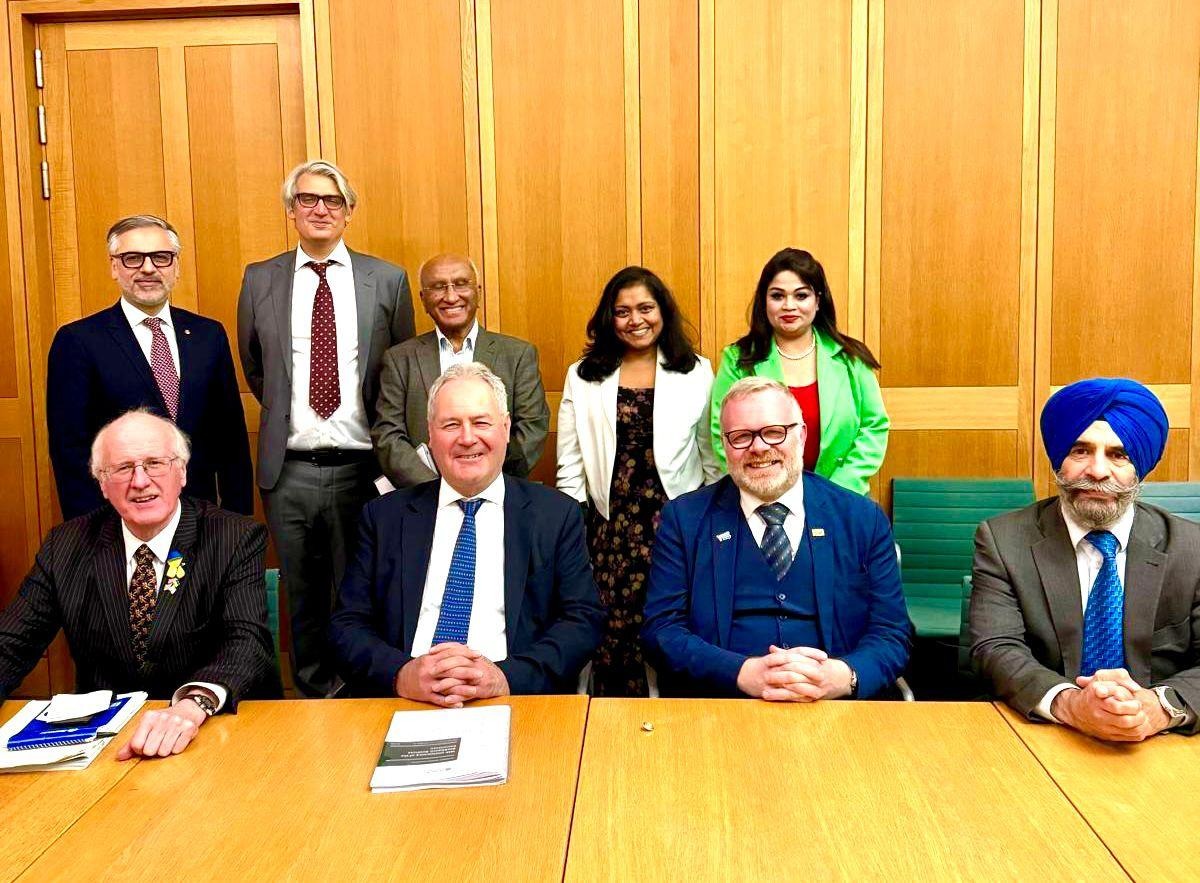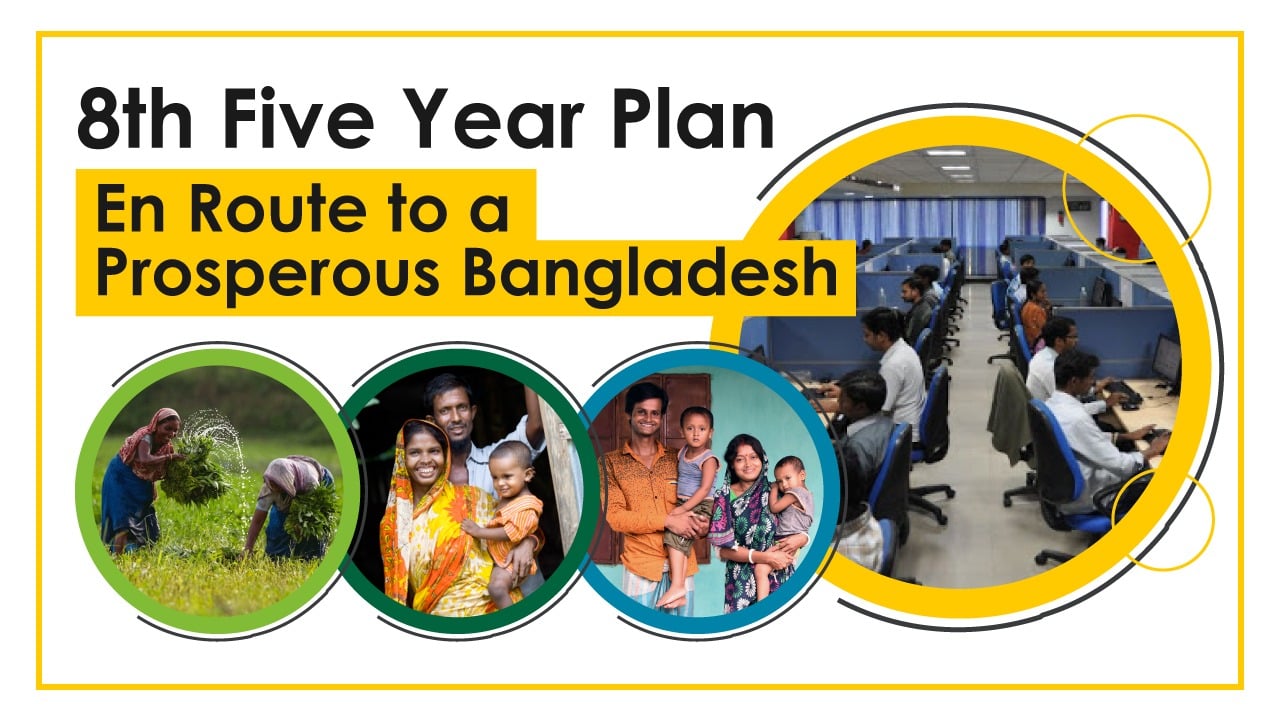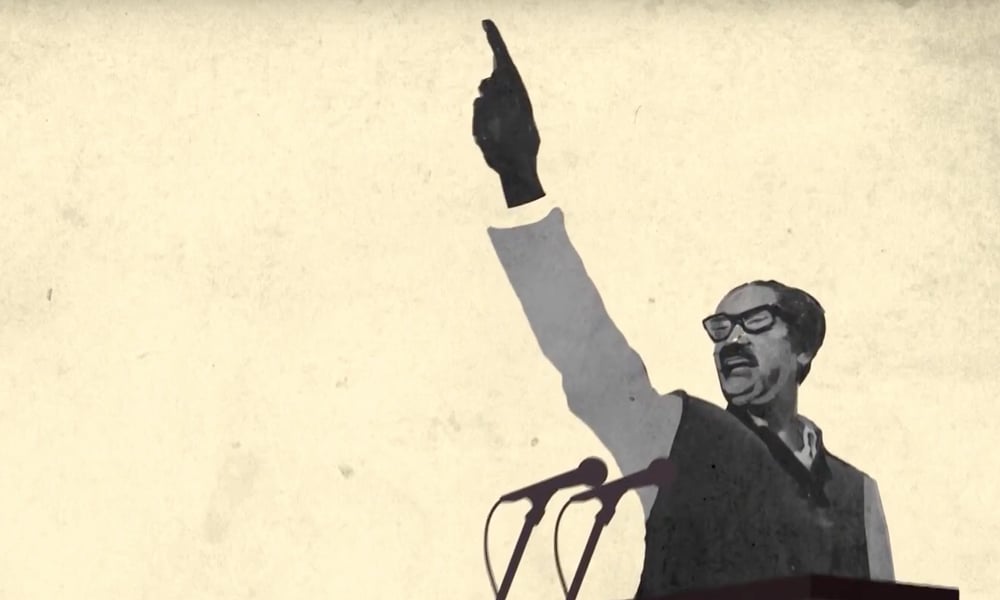4115
Published on June 3, 2015In the last six years, cooperation between the two countries reached new peaks in such sectors as historical disputes, diplomacy, bilateral and regional connectivity, power and energy, combating crimes and terrorism, trade and commerce, and management of water resources.
With the upcoming visit of the Indian Prime Minister Narendra Modi in June 2015, this document looks at some of the significant developments in Bangladesh-India relations, which have helped to transform the bilateral ties in the last six years under the successive Awami League governments led by its visionary leader, Prime Minister Sheikh Hasina.
DIPLOMACY AND HIGH PROFILE VISITS
Since Awami League assumed power in 2009, a number of landmark visits has taken place between the highest dignitaries of Bangladesh and India and high-level diplomacy has been infused with new levels of activism. This started with Prime Minister Sheikh Hasina’s visit to India in January 2010 followed by the then Indian Prime Minister Manmohan Singh’s visit to Bangladesh in September 2011. During this visit, the two countries signed the landmark Framework Agreement on Cooperation for Development, which reiterated the bases for India-Bangladesh relations in light of a new era.
Such visits opened a new chapter in the bilateral relations between the two countries. A new dawn of strengthening the existing relations now beckons with the upcoming visit of Indian Prime Minister Narendra Modi. Manmohan Singh’s visit was followed by the visit of the Indian President Pranab Mukherjee to Bangladesh in March 2013, on his first trip abroad since assuming this post, standing testimony to the significance of the relationship between the neighbours.
By the same token, Bangladeshi President Abdul Hamid paid an official visit to India from 18 to 23 December 2014. Additionally, on her first overseas assignment after assuming office of Indian Minister for External Affairs, Sushma Swaraj visited Bangladesh in the last week of June 2014 had provided further momentum to the close and friendly relationship between India and Bangladesh.
Leaders of the two countries also met each other in recent times. Prime Minister Sheikh Hasina and Prime Minister Narendra Modi had bilateral meetings in the sidelines of the United Nations General Assembly in September 2014 and subsequently on the sidelines of the SAARC Summit in November 2014 in Kathmandu, both involving fruitful bilateral discussions.
To regularize high-level policy discussions and negotiations, Bangladesh and India have started the Foreign Minister level Joint Consultative Commission (JCC) meetings from 2012. The first such meeting was held between the then Indian External Affairs Minister S M Krishna and erstwhile Bangladeshi Foreign Affairs Minister Dr. Dipu Moni on 7 May, 2012 in New Delhi.
The second meeting of the JCC was held in Dhaka on 16 February 2013 between erstwhile Bangladeshi Foreign Minister Dr. Dipu Moni, and the then Indian External Affairs Minister Salman Khurshid. The third such meeting was held in New Delhi on September 20, 2014 between Bangladesh Foreign Minister Abul Hassan Mahmood Ali and Sushma Swaraj, Indian External Affairs Minister. Bangladesh and India are also holding regular Joint Working Group meetings, in such areas as jute and textiles, fisheries, health sectors and customs. Regular bilateral consultations are taking place from official level to Secretary level to Minister level.
LAND BOUNDARY AGREEMENT
Prime Ministers of India and Bangladesh India Gandhi and Bangabandhu Sheikh Mujibur Rahman signed the historic Land Boundary Agreement in 1974 to exchange enclaves and simplify the international border between the two countries. A revised version of this agreement has now been adopted by the two countries 41 years later, when the Indian Parliament passed the 119th Amendment to the Indian Constitution on May 7, 2015.
Under this agreement, the enclave residents on both sides of the border can continue to reside at their present location or move to the country of their choice. Throughout the years, this particular move was one of the principal bones of contention between Bangladesh-India relations. The successful resolution of this decades old matter shows on what footing the current relations between the two countries rest.
CONNECTIVITY
Connectivity between Bangladesh and India has reached new heights since Bangladesh Awami League came to power in 2009. Several connectivity agreements between the two countries have been executed during this period, while older agreements have been renewed, with appropriate modifications where necessary. For instance, recently, the two countries amended the India-Bangladesh Trade Agreement that will allow Bangladesh to conduct trade with third countries like Nepal and Bhutan by using India’s land, water, and rail routes and vice versa for India. The landlocked Nepal and Bhutan have also be given access to the facilities of our ports in Chittagong and Mongla.
During the last six years, services of the Maitree Express, the only rail service between Dhaka and Kolkata, has been extended by increasing frequency of services. Talks are underway for further extension of this service, which officially resumed rail connectivity between the two neighbouring countries after a 43 years gap in 2008. Two international bus routes are currently carrying cross-border operations, namely Dhaka-Kolkata and Dhaka-Agartala.
On 22 May 2015, trial run for the direct bus service between Dhaka, Bangladesh and Guwahati, India via Shillong started, with the hopes of regularizing the service during the upcoming visit of Prime Minister Narendra Modi. On June 1, 2015, trial run of direct bus service between Kolkata-Dhaka-Agartala also began. Bangladesh Cabinet has already approved the draft deals for regularizing these services. Agreements have also been arrived for air connection between Dhaka and Guwahati.
India and Bangladesh have also finalized the agreement on coastal shipping to allow river vessels to carry cargo between the two countries which will be signed during the visit of the Indian Prime Minister. This arrangement will boost trade between the neighbours manifold and taking advantage of the proximity the cost of transportation will be greatly reduced.
The two countries have also extended their Protocol on Inland Water Transit and Trade Agreement – first signed under Bangabandhu – and will not only enhance trade but will also facilitate greater investments in transport infrastructure through public-private partnerships. Under the new agreement, Bangladesh will be allowed the use of channels for trade with other countries like Nepal and Bhutan. When the agreement comes into effect, the direct route will be around 620 nautical miles, which will cut the trade cost by nearly 50%.
REGIONAL CONNECTIVITY
Cooperation and connectivity between India and Bangladesh has also received, and will continue to receive further boost from Bangladesh's proactive stance on enhancing connectivity in South and Southeast Asia. On June 2015, Bangladesh, India, Bhutan and Nepal are set to sign an agreement which will ensure seamless travel of transports between the borders of these countries. The finalized agreement based after the EU model, once signed, will ensure uninterrupted transit of passenger, personal and cargo vehicles between the said countries by the end of 2015.
Bangladesh was also instrumental in pushing for the SAARC deal on energy cooperation. In November 2014, the eight South Asian countries signed the Framework Agreement on Cooperation in Power Sector in Kathmandu, Nepal. From last September, Bangladesh has been successfully hosting the permanent secretariat of the BIMSTEC, the Bay of Bengal Initiative for Multi-Sectoral Technical and Economic Cooperation, comprising of Bangladesh, India, Myanmar, Sri Lanka, Nepal and Bhutan and Thailand.
Bangladesh and India are also both part of the China proposed Bangladesh-China-India-Myanmar Economic Corridor (BCIM-EC) also known as the Silk-Route. Bangladesh hosted the second Joint Study Group of this emerging regional cooperation in Cox's Bazar in December, 2014. Further regional cooperation between Bangladesh and its neighbours is expected in the implementation of the planned concept of "Blue Economy" now that the country is in receipt of large new marine territories as a result of the maritime verdict wins against India and Myanmar.
POWER AND ENERGY
The last six years has seen Bangladesh and India power cooperation opening up a new chapter on an unprecedented scale. For the first time in our history the two countries have joined their power grid at Bheramara that has already enabled Bangladesh to buy 500 megawatts from India and arrangements for an additional 500 megawatts has been finalized. In December a further 100 megawatt electricity will begin to flow from Tripura with a grid capacity for 400 megawatts.
The impetus for greater power sector cooperation between Bangladesh and India was received from the bilateral Framework Agreement signed by Prime Minister Sheikh Hasina and the then Indian Prime Minister Manmohan Singh during the latter's visit to Dhaka in September 2011.
Bangladesh is working to import 600 mega-watts of electricity from India. Since, October 2014 Bangladesh has been importing 500 mega-watts of electricity from Behrampur, India via Kushtia, Bheramara. Further 100 mega-watts electricity will be imported from Palatana Power Plant in Tripura from December 2015. Bangladesh had facilitated construction of the Palatana plant by allowing transportation of equipment through Ashuganj river port, saving both time and money for India. Currently, Bangladesh is negotiating with India for the import of a further 2000 mega-watts of electricity from the latter by the year 2018.
Of the targeted amount, Bangladesh is hoping to get at least 1,500 mega-watts from Rangia Raota of Assam and 500 megawatts from Baharampur of West Bengal. Bangladesh will allow India to transmit 7,000 megawatts of power from RangiaRaota of Assam to Borakpur in Bihar through Barapukuria in Dinajpur.
Currently,a joint feasibility study is being conducted by the two countries for the construction of a 129-kilometer cross-country petroleum pipeline. Through this pipeline, Assam-based Numaligarh Refineries Limited, a subsidiary of Bharat Petroleum Corporation Limited, will import petroleum products from Shiliguri in West Bengal to Parbatipur in Bangladesh. Pending installation of the pipeline, Bangladesh will start importing 0.05 per cent-sulfur diesel soon from India through Brahmaputra River with small barges. The quantity will be 2,000 tonnes per month.
In August 2010, Bangladesh`s Power Development Board (PDB) and India`s state-owned National Thermal Power Corporation (NTPC) signed a Memorandum of Understanding (MoU) to set up a 1,350 megawatts coal powered mega power plant at Rampal, Khulna. This was followed up by an agreement signed between the same two entities in January 2012 to implement the $1.82 billion project on a 50:50 equity basis, with NTPC setting up and operating the plant.
A joint venture company of NTPC and the BPDB is expected to start the installation work of the plant next year, which is likely to go into operation by 2019. The 130 Rampal power plant is an outstanding example of joint venture in power generation between the two countries.
Government of India has also offered Bangladesh buy from, or enter into jointly with India, in various hydroelectric projects planned by India in the northeast of India. During the visit of Prime Minister Modi it is expected that a number of power production agreements with the Indian private sector will be signed that will enable us reach our target of 20,000 megawatts of electricity generation by 2019.
LAW ENFORCEMENT AND COUNTER TERRORISM
Under Sheikh Hasina’s bold and courageous stance on terrorism and militancy, Bangladesh ceased being a safe haven for local, regional and international terrorists, notoriety the country achieved during the last BNP-Jamaat tenure of 2001-06. The successive Awami League led governments has achieved this feat through a combination of legal and social measures, including enactment of several tough anti-terrorism legislations.
Security cooperation between the two countries received the first boost when Prime Minister Sheikh Hasina visited New Delhi in January 2010, during which time three agreements were signed, namely: Mutual Legal Assistance on Criminal Matters; Transfer of Sentenced Persons and Combating International Terrorism, Organized Crime, and Illicit Drug Trafficking. The cooperation currently rests on a three-tiered system, from official level, to Secretary-level to Ministerial-level.
There are sector-wise Task Forces, which work with aim to cooperate on specific issues, such as Task Forces for combating smuggling of Fake Currency Notes and Human Trafficking. Recently, the Indian Cabinet in May 2015 has approved a Memorandum of Understanding (MoU) between the two countries to prevent human trafficking and ways to reintegrate the victims with their families.
In January 2013, Bangladesh signed an extradition treaty with India for disrupting the regional connections and networks between terrorist and militant outfits in South Asia. Bangladesh and India are also implementing a Coordinated Border Management Plan (CBMP) and have increased joint patrolling in its long and porous mutual border to curb various criminal activities, including terrorism and trafficking. There has also been significant reduction in the number of border killings. Enhanced cooperation among border officials have been ensured through holding regular meetings between DCs/DMs of bordering districts of the two countries.
Bangladesh in particular has been lauded by India for its role in countering subservice activities by various Indian separatist groups operating from, or at least using, Bangladeshi territories significantly. Bangladesh’s crackdown on separatist outfits from Assam and Tripura have resulted in their networks being dismantled, arrest and handover of several high profile terrorists and arrest and trial of other such troublemakers. The security forces in Bangladesh have continuously raided dens of such outfits with much success, seizing arms and ammunitions.
LINE OF CREDIT
In 2010, during the visit by then Prime Minister Manmohan Singh, Bangladesh received a $1 billion Line of Credit (LoC) from India. The soft loans were used to finance 14 development projects, particularly infrastructure building. The LoC represented the single largest loan to Bangladesh from any nation, development bank or donor agency. Currently, negotiations are underway for a further LoC from India.
INDIA-BANGLADESH TRADE
Trade relations between India and Bangladesh have witnessed a significant improvement in the recent past. In 2011, India decided to grant zero duty access to all goods from Bangladesh and this has opened new opportunities for expansion of bilateral trade. India has granted zero-duty, quota free access to Bangladesh’s exportable items to its market including 46 RMG items (except for 25 items on the SAFTA negative list).
The Standard Operating Procedure signed in August 2010 has been made operational which allows trucks carrying bilateral cargo to cross up to 200 meters beyond the zero line and unload cargo at the warehouses. Establishing new Land Customs Stations (LCSs) and improvement of existing infrastructural facilities of the LCS, land ports has also helped boost bilateral trade.
Other measures in this regard include harmonization of standards and mutual recognition of certificates, removal of non-tariff and para-tariff barriers and so on. For instance, for soap, port restriction waived through Petrapole, Sutarkandi, Dawki and Agartala; jute bag labeling requirement waived; Jamdanee saree testing facilities set up in Kolkata; 14% CVD and 4% another duty waived; Bangladeshi electronic items allowed through all Indian LCSs; Bangladeshi motorbikes allowed through Petrapole and Agartala etc.
Between 2001-2008, Bangladesh’s earnings from exports to India stood at US$ 1256.24 million, which has more than doubled to US$ 2870.21 million between 2009-2015. Indo-Bangladesh trade has increased from about US$ 3 billion to over US$ 6 billion in the last six years. More significantly, Bangladesh's export to India has increased to bring the trade imbalance from 1:10 down to 1:8.5 over the same period. Indian exports to Bangladesh have also doubled in the last five years, with earnings worth more than $6 billion during that period.
To enhance Indian investment, Bangladesh has already announced setting up exclusive economic zones for Indian investors. Hitherto unheard of exports are being contemplated and implemented, namely, coarse rice to India’s Northeast and bandwidth. Bangladesh Cabinet in April 2015 cleared an agreement to export 10GBPS unused submarine cable bandwidth to India that will fetch the nation $1.2 million every year.
To rejuvenate trade and commerce along the massive border shared by the two countries, the concept of “border haats” (bazaars) was introduced, which allows local producers and traders from both sides of the respective borders to trade locally produced commodities and products. Till date, three such border haats have been opened. The first border haat started operations in July 2011, at Baliamari of Kurigram of Bangladesh and Kalaichar of West Garo Hills of India. May 2012 saw the second border haat began operations at Dalora at Sunamganj district of Bangladesh and Balat at East Khasi Hills border of India.
In January 2014, Bangladesh and India jointly opened the third border haat along the Feni-Tripura frontier. This haat falls along the Chhagalnaia border in Feni, Bangladesh and on the Indian side, under Srinagar, Tripura. It is also being hoped that the fourth such haat, falling in Sipahijala, Tripura and Brahmanbaria, Bangladesh, would be opened during the upcoming visit of Indian Prime Minister Narendra Modi in June 2015.
WATER AND MARITIME RESOURCES
Under the astute leadership of Prime Minister Sheikh Hasina, Bangladesh has been able to settle its maritime boundary disputes amicably with its neighbours India and Myanmar by having recourse to international law and institutions. Under a judgment awarded by the Hague based Permanent Court of Arbitration on 7 July 2014, Bangladesh received 19,467square kilometers out of 25,602 sq. km disputed area in the Bay of Bengal. This particular development stands evidence of the fact that despite the warm relations between both countries, Prime Minister Sheikh Hasina and her government has been able to safeguard Bangladesh’s interests in that relationship.
Sources:
Ministry of Foreign Affairs, Bangladesh
Ministry of External Affairs, India
Media Reports (Bangladesh and India)
High Commission of India, Dhaka














